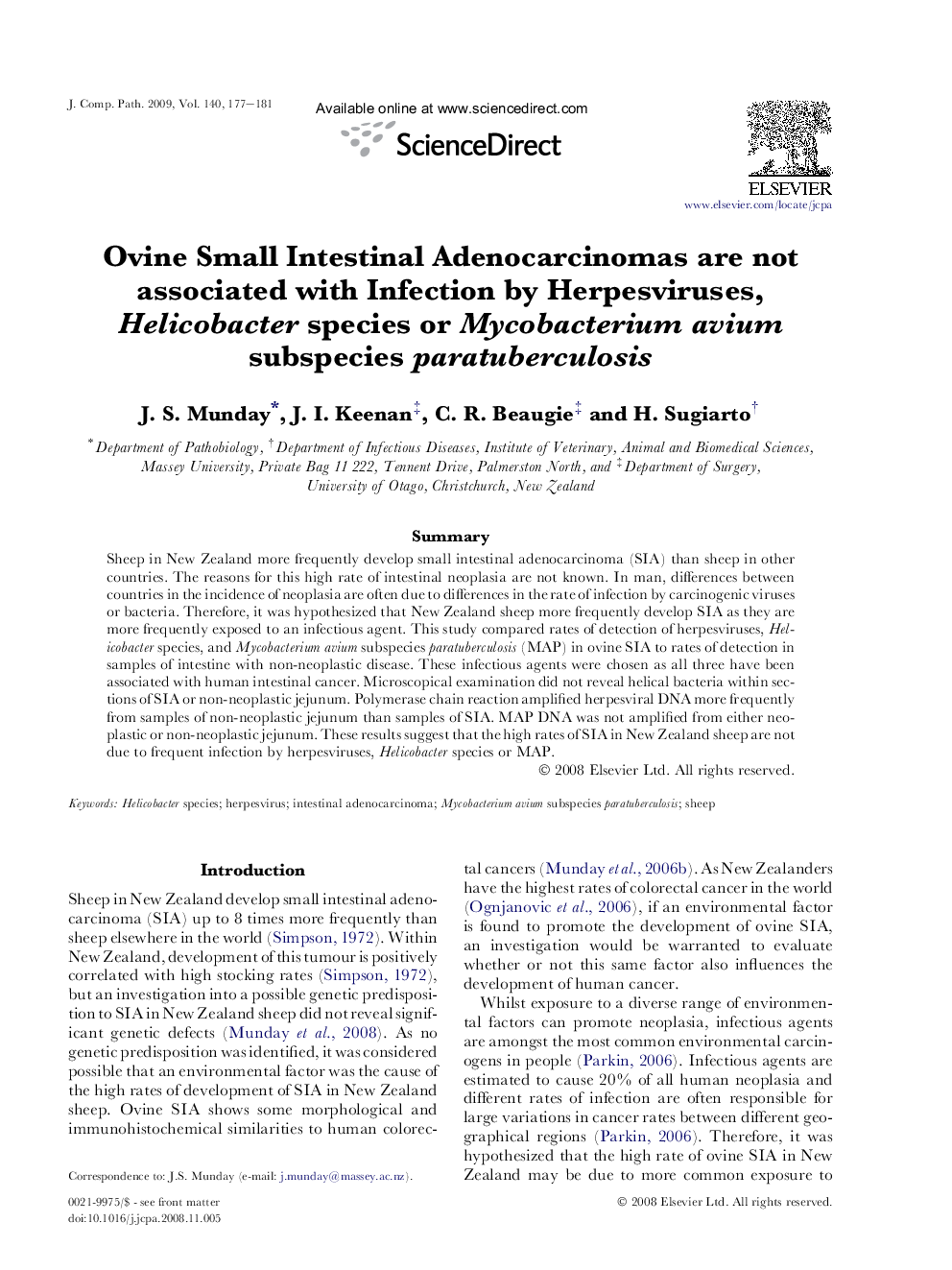| Article ID | Journal | Published Year | Pages | File Type |
|---|---|---|---|---|
| 2438452 | Journal of Comparative Pathology | 2009 | 5 Pages |
SummarySheep in New Zealand more frequently develop small intestinal adenocarcinoma (SIA) than sheep in other countries. The reasons for this high rate of intestinal neoplasia are not known. In man, differences between countries in the incidence of neoplasia are often due to differences in the rate of infection by carcinogenic viruses or bacteria. Therefore, it was hypothesized that New Zealand sheep more frequently develop SIA as they are more frequently exposed to an infectious agent. This study compared rates of detection of herpesviruses, Helicobacter species, and Mycobacterium avium subspecies paratuberculosis (MAP) in ovine SIA to rates of detection in samples of intestine with non-neoplastic disease. These infectious agents were chosen as all three have been associated with human intestinal cancer. Microscopical examination did not reveal helical bacteria within sections of SIA or non-neoplastic jejunum. Polymerase chain reaction amplified herpesviral DNA more frequently from samples of non-neoplastic jejunum than samples of SIA. MAP DNA was not amplified from either neoplastic or non-neoplastic jejunum. These results suggest that the high rates of SIA in New Zealand sheep are not due to frequent infection by herpesviruses, Helicobacter species or MAP.
